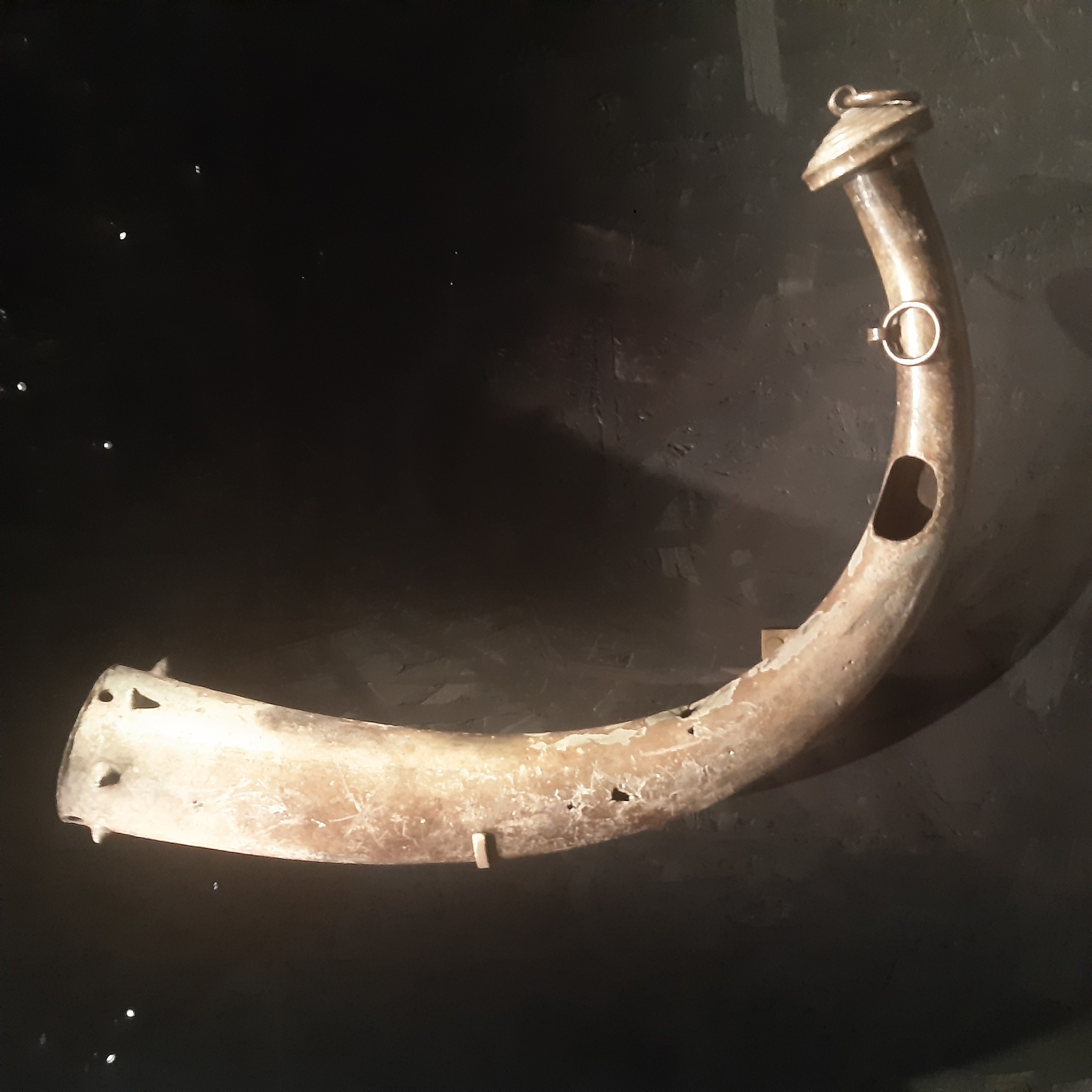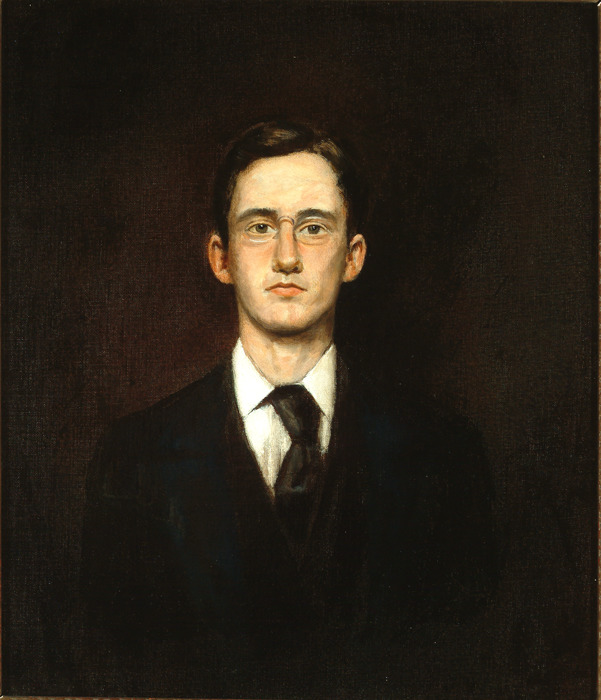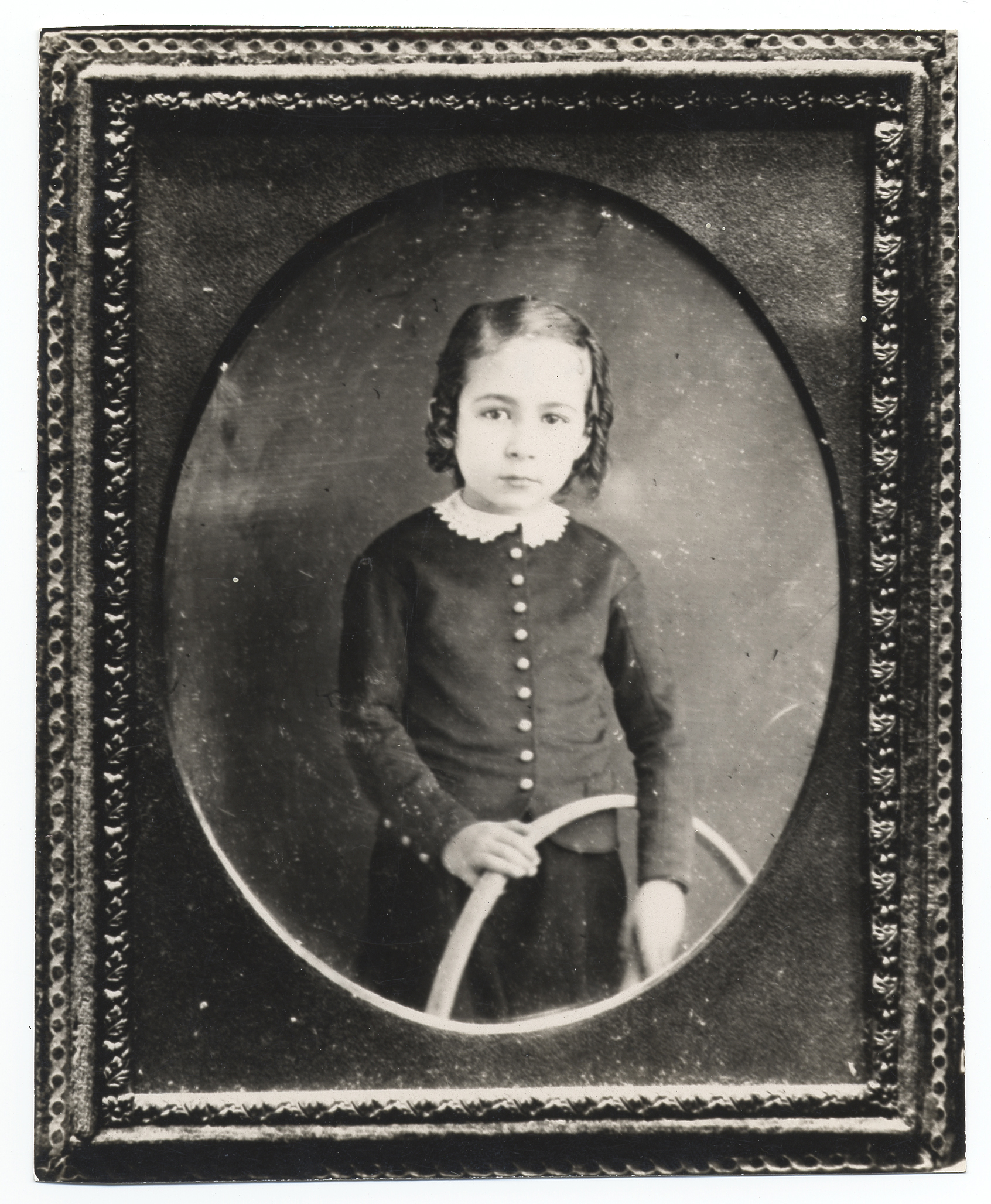|
Thomas Hovenden
Thomas Hovenden (December 28, 1840 – August 14, 1895), was an Irish artist and teacher who spent much of his life in the United States. He painted realistic quiet family scenes, narrative subjects and often depicted African Americans. Biography Hovenden was born in Dunmanway, Co. Cork, Ireland. His parents died at the time of the Great Famine and he was placed in an orphanage at the age of six. Apprenticed to a carver and gilder, he studied at the Cork School of Design. In 1863, he immigrated to the United States. He studied at the National Academy of Design in New York City. He moved to Baltimore in 1868 and then left for Paris in 1874. He studied at the École des Beaux Arts under Cabanel, but spent most of his time with the American art colony at Pont-Aven in Brittany led by Robert Wylie, where he painted many pictures of the peasantry. Returning to America in 1880, he became a member of the Society of American Artists and an Associate member of the National Ac ... [...More Info...] [...Related Items...] OR: [Wikipedia] [Google] [Baidu] |
Dunmanway
Dunmanway (, official Irish name: ) is a market town in County Cork, in the southwest of Ireland. It is the geographical centre of the region known as West Cork. It is the birthplace of Sam Maguire, an Irish Protestant republican, for whom the trophy of the All-Ireland Senior Football Championship is named. There is disagreement over the meaning and origin of the town's name. Various sources list its meaning when translated from Irish as "the castle of the yellow river," "the castle on the little plain," "the fort of the gables (or pinnacles)," and "the fort of the yellow women." The town centre is built on and around two rivers, which are tributaries of the larger River Bandon, which passes by at the east end of the town. The town is twinned with Quéven, France. Dunmanway won the Irish Tidy Towns Competition in 1982. More recently, the town came to national and international attention thanks to a visit by Liverpool Football Club for a pre-season soccer friendly. The populatio ... [...More Info...] [...Related Items...] OR: [Wikipedia] [Google] [Baidu] |
Brittany
Brittany (; french: link=no, Bretagne ; br, Breizh, or ; Gallo language, Gallo: ''Bertaèyn'' ) is a peninsula, Historical region, historical country and cultural area in the west of modern France, covering the western part of what was known as Armorica during the period of Roman occupation. It became an Kingdom of Brittany, independent kingdom and then a Duchy of Brittany, duchy before being Union of Brittany and France, united with the Kingdom of France in 1532 as a provinces of France, province governed as a separate nation under the crown. Brittany has also been referred to as Little Britain (as opposed to Great Britain, with which it shares an etymology). It is bordered by the English Channel to the north, Normandy to the northeast, eastern Pays de la Loire to the southeast, the Bay of Biscay to the south, and the Celtic Sea and the Atlantic Ocean to the west. Its land area is 34,023 km2 . Brittany is the site of some of the world's oldest standing architecture, ho ... [...More Info...] [...Related Items...] OR: [Wikipedia] [Google] [Baidu] |
Robert Henri
Robert Henri (; June 24, 1865 – July 12, 1929) was an American painter and teacher. As a young man, he studied in Paris, where he identified strongly with the Impressionists, and determined to lead an even more dramatic revolt against American academic art, as reflected by the conservative National Academy of Design. Together with a small team of enthusiastic followers, he pioneered the Ashcan School of American realism, depicting urban life in an uncompromisingly brutalist style. By the time of the Armory Show, America's first large-scale introduction to European Modernism (1913), Henri was mindful that his own representational technique was being made to look dated by new movements such as Cubism, though he was still ready to champion avant-garde painters such as Henri Matisse and Max Weber. Henri was named as one of the top three living American artists by the Arts Council of New York. Early life Robert Henri was born Robert Henry Cozad in Cincinnati, Ohio to There ... [...More Info...] [...Related Items...] OR: [Wikipedia] [Google] [Baidu] |
Ashcan School
The Ashcan School, also called the Ash Can School, was an artistic movement in the United States during the late 19th-early 20th century that produced works portraying scenes of daily life in New York, often in the city's poorer neighborhoods. The artists working in this style included Robert Henri (1865–1929), George Luks (1867–1933), William Glackens (1870–1938), John Sloan (1871–1951), and Everett Shinn (1876–1953). Some of them met studying together under the renowned realist Thomas Anshutz at the Pennsylvania Academy of the Fine Arts; others met in the newspaper offices of Philadelphia where they worked as illustrators. Theresa Bernstein, who studied at the Philadelphia School of Design for Women, was also a part of the Ashcan School. She was friends with many of its better-known members, including Sloan with whom she co-founded the Society of Independent Artists. The movement, which took some inspiration from Walt Whitman's epic poem ''Leaves of Grass'', has bee ... [...More Info...] [...Related Items...] OR: [Wikipedia] [Google] [Baidu] |
Alexander Stirling Calder
Alexander Stirling Calder (January 11, 1870 – January 7, 1945) was an American sculpture, sculptor and teacher. He was the son of sculptor Alexander Milne Calder and the father of sculptor Alexander Calder, Alexander (Sandy) Calder. His best-known works are ''George Washington as President'' on the Washington Square Arch in New York City, the ''Swann Memorial Fountain'' in Philadelphia, and the ''Leif Eriksson Memorial'' in Reykjavík, Iceland. Education A. Stirling Calder was born in Philadelphia, Pennsylvania, the son of sculptor Alexander Milne Calder and Margaret Stirling. He attended city public schools, and enrolled at the Pennsylvania Academy of the Fine Arts in Fall 1885, at age 15. He studied under Thomas Eakins for several months, until Art Students' League of Philadelphia, the teacher's forced resignation in February 1886. Calder remained at PAFA, studying under Thomas Anshutz and James P. Kelly. Two of his sculptures were accepted for PAFA's 1887 annual exhibition, a ... [...More Info...] [...Related Items...] OR: [Wikipedia] [Google] [Baidu] |
Thomas Eakins
Thomas Cowperthwait Eakins (; July 25, 1844 – June 25, 1916) was an American realist painter, photographer, sculptor, and fine arts educator. He is widely acknowledged to be one of the most important American artists. For the length of his professional career, from the early 1870s until his health began to fail some 40 years later, Eakins worked exactingly from life, choosing as his subject the people of his hometown of Philadelphia. He painted several hundred portraits, usually of friends, family members, or prominent people in the arts, sciences, medicine, and clergy. Taken ''en masse'', the portraits offer an overview of the intellectual life of contemporary Philadelphia; individually, they are incisive depictions of thinking persons. In addition, Eakins produced a number of large paintings that brought the portrait out of the drawing room and into the offices, streets, parks, rivers, arenas, and surgical amphitheaters of his city. These active outdoor venues allo ... [...More Info...] [...Related Items...] OR: [Wikipedia] [Google] [Baidu] |
Pennsylvania Academy Of The Fine Arts
The Pennsylvania Academy of the Fine Arts (PAFA) is a museum and private art school in Philadelphia, Pennsylvania."Pennsylvania Academy of the Fine Arts" Encyclopedia Britannica, Retrieved 28 July 2018. It was founded in 1805 and is the first and oldest art museum and art school in the United States. The academy's museum is internationally known for its collections of 19th- and 20th-century American paintings, sculptures, and works on paper. Its archives house important materials for the study of American art history, museums, and art training. It offers a Bachelor of Fine Arts, [...More Info...] [...Related Items...] OR: [Wikipedia] [Google] [Baidu] |
Fine Arts Museums Of San Francisco
The Fine Arts Museums of San Francisco (FAMSF), comprising the de Young Museum in Golden Gate Park and the Legion of Honor in Lincoln Park, is the largest public arts institution in the city of San Francisco. The permanent collection of the Fine Arts Museums, with about 150,000 objects, is organized into nine areas, each with a curatorial staff. History "The Fine Arts Museums of San Francisco are governed by three boards. The Fine Arts Museums (FAMSF) of San Francisco is a Charitable Trust Department of the City and County of San Francisco. The Museums’ endowment funds are held by The Fine Arts Museums Foundation (FAMF), a private 501(c)3 organization. The Corporation of the Fine Arts Museums (COFAM) is also a private 501(c)3 organization, which raises funds for and manages most of the day-to-day operations of the museums." Unlike most other major art museums, the Fine Arts Museums of San Francisco do not have a large endowment from which to draw. The museums operate o ... [...More Info...] [...Related Items...] OR: [Wikipedia] [Google] [Baidu] |
John Brown (abolitionist)
John Brown (May 9, 1800 – December 2, 1859) was an American abolitionist leader. First reaching national prominence for his radical abolitionism and fighting in Bleeding Kansas, he was eventually captured and executed for a failed incitement of a slave rebellion at Harpers Ferry preceding the American Civil War. An evangelical Christian of strong religious convictions, Brown was profoundly influenced by the Puritan faith of his upbringing. He believed that he was "an instrument of God", raised up to strike the "death blow" to American slavery, a "sacred obligation". Brown was the leading exponent of violence in the American abolitionist movement: he believed that violence was necessary to end American slavery, since decades of peaceful efforts had failed. Brown said repeatedly that in working to free the enslaved, he was following Christian ethics, including the Golden Rule, Reprinted in '' The Liberator'', October 28, 1859 as well as the U.S. Declaration of Independence, ... [...More Info...] [...Related Items...] OR: [Wikipedia] [Google] [Baidu] |
Hovenden House, Barn And Abolition Hall
Hovenden House, Barn and Abolition Hall is a group of historic buildings in Plymouth Meeting, Whitemarsh Township, Montgomery County, Pennsylvania. In the decades prior to the American Civil War, the property served as an important station on the Underground Railroad. Abolition Hall was built to be a meeting place for abolitionists, and later was the studio of artist Thomas Hovenden. The house is located at the northeast corner of Germantown and Butler Pikes, diagonally opposite the Plymouth Friends Meetinghouse. Northeast of the house is the stone barn, and attached to the barn's northeast corner is the 2-story carriage house known as Abolition Hall. The three buildings are part of a 10.45-acre farm, and are contributing properties in the Plymouth Meeting Historic District. ''Note:'' This includes The property is threatened by a 2016 proposal to reroute Butler Pike between the Hovenden House and its barn. Preservation Pennsylvania added the property to its ''2017 Pennsylv ... [...More Info...] [...Related Items...] OR: [Wikipedia] [Google] [Baidu] |
Underground Railroad
The Underground Railroad was a network of clandestine routes and safe houses established in the United States during the early- to mid-19th century. It was used by enslaved African Americans primarily to escape into free states and Canada. The network was assisted by abolitionists and others sympathetic to the cause of the escapees. The enslaved persons who risked escape and those who aided them are also collectively referred to as the "Underground Railroad". Various other routes led to Mexico, where slavery had been abolished, and to islands in the Caribbean that were not part of the slave trade. An earlier escape route running south toward Florida, then a Spanish possession (except 1763–1783), existed from the late 17th century until approximately 1790. However, the network now generally known as the Underground Railroad began in the late 18th century. It ran north and grew steadily until the Emancipation Proclamation was signed by President Abraham Lincoln.Vox, Lisa"How D ... [...More Info...] [...Related Items...] OR: [Wikipedia] [Google] [Baidu] |
Abolitionism In The United States
In the United States, abolitionism, the movement that sought to end slavery in the country, was active from the late colonial era until the American Civil War, the end of which brought about the abolition of American slavery through the Thirteenth Amendment to the United States Constitution (ratified 1865). The anti-slavery movement originated during the Age of Enlightenment, focused on ending the trans-Atlantic slave trade. In Colonial America, a few German Quakers issued the 1688 Germantown Quaker Petition Against Slavery, which marks the beginning of the American abolitionist movement. Before the Revolutionary War, evangelical colonists were the primary advocates for the opposition to slavery and the slave trade, doing so on humanitarian grounds. James Oglethorpe, the founder of the colony of Georgia, originally tried to prohibit slavery upon its founding, a decision that was eventually reversed. During the Revolutionary era, all states abolished the international sla ... [...More Info...] [...Related Items...] OR: [Wikipedia] [Google] [Baidu] |




.jpg)

.jpg)




